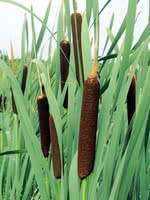Mon-Fri 9am - 5pm Mountain time
Common Cattail vs Dwarf Arctic Willow
Typha latifolia
Salix purpurea Nana
CUSTOM GROW
NOT AVAILABLE THIS SEASON - MIGHT RETURN
Cattail is found all across North America, growing next to water. Like other waterside plants, Cattail provides erosion control and forage for animals.
It is suitable for land reclamation. Cattail is able to tolerate cold weather and occasional flooding.
Dwarf Arctic Willow is a beautiful ornamental shrub that attracts butterflies. It grows into a low dense, rounded shrub with slender purple stems. The Dwarf Arctic Willow has bluish-green foliage throughout the season and stunning when planted as an artistic hedge. Cold hardy and juglone tolerant, this shrub will make a nice addition to your urban garden.

